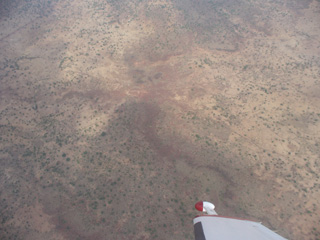Geophysics

Geophysics is a branch of earth science dealing with the physical processes and phenomena occurring especially in the Earth and in its vicinity. Geophysics applies the principles of physics to the study of the Earth, and the use of quantitative methods for their analysis. Geophysics can refer to geological applications such as studies of the Earth's shape, its gravitational and magnetic fields, its internal structure and composition, its dynamics and their surface expression in plate tectonics, the generation of magmas, volcanism and rock formation. It can also include studies of the water cycle including snow and ice, fluid dynamics of the oceans and atmosphere, electricity and magnetism of the ionosphere and magnetosphere, and solar-terrestrial relations.
Geophysics is applied to societal needs, such as mineral resources, study of natural hazards and environmental protection. For exploration geophysics, geophysical surveys are used to analyze mineral deposits and petroleum reservoirs, locate groundwater, find archaeological relics, determine thicknesses of glaciers and soils, and assess sites for environmental remediation.
Types of Exploration Geophysical Methods
Exploration geophysical methods used for the exploration and mapping of mineral and petroleum deposits include:
-
Magnetics: measures spatial variations in the strength of the geomagnetic field to determine magnetic susceptibility and remanence.
-
Radiometrics: measures natural radiation and can determine locations of minerals containing trace quantities of uranium, thorium and potassium.
-
Gravity techniques, including gravity gradiometry: measures spatial variations in the strength of the gravitational field of the Earth to determine density.
- Electromagnetic methods, including frequency and time domain electromagnetics,magnetotellurics, ground penetrating radar, and magnetic resonance sounding: measures response to electromagnetic radiation to determine electric conductivity/resistivity and inductance.
-
Seismic methods - reflection seismology and seismic refraction: measures travel times of reflected/refracted seismic waves to determine seismic velocity and density.
- Remote sensing techniques such as hyperspectral imaging
Airborne Geophysical Survey Methods
While all of these methods can be implemented on the ground, magnetics, radiometrics, electromagnetics, and gravity can be conducted from an aircraft. Airborne surveys have the advantage of being able to map out large areas quickly and provide accessibility to difficult terrain. Ground geophysical surveys are usually confined to smaller sites of interest.
Although airborne geophysics have been conducted since the 1950's, in recent years, significant technological breakthroughs in the instrumentation and methods have led to it becoming a critical tool in mineral exploration. Airborne surveys are widely accepted and promoted within the industry as being one of the first steps in the exploration process. Magnetic, radiometric, electromagnetic and gravity surveys are all now frequently carried out by aircraft. The geophysical equipment is typically installed on specially modified fixed wing and rotary wing aircraft. However, there are also systems that can be towed by, or attached to the skid gear of helicopters, permitting even lower and slower data acquisition in terrain that is inaccessible to fixed wing aircraft. The future of geophysical surveys is bright as the technologies continue to evolve and produce better results with airborne methods continuing to be an important part of exploration geophysics.
Specialists in Airborne Geophysical Surveys
Terraquest was established in 1984 and since then, our dedicated team has flown over 1,500 airborne geophysical surveys using both fixed wing and helicopter platforms. Our professional crews provide significant experience having carried out airborne magnetic, gravity, gamma ray spectrometry, and electromagnetics on five continents. Our quality data sets have been utilized in the exploration for base and precious metals, kimberlite, hydrocarbons, uranium, rare earth minerals and water. The company has performed exemplary surveys for both small and large exploration groups as well as many government agencies. References can be provided upon request.
Visit www.terraquest.ca.